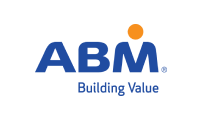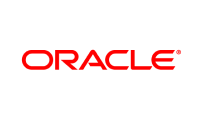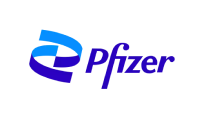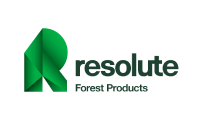In today’s fast-evolving business environment, ESG reporting is no longer optional — it’s an expectation. Market conditions shaped by economic uncertainty, climate risk, regulatory shifts, and changing stakeholder values have led to a surge in global ESG disclosure requirements. At the heart of this landscape are three major frameworks shaping sustainability reporting across jurisdictions and sectors: European Sustainability Reporting Standards (ESRS), IFRS Sustainability Disclosure Standards, and the Global Reporting Initiative (GRI).
With overlapping areas, differing scopes, and varying stakeholder focuses, these standards can seem daunting. However, aligning them effectively offers strategic advantages, including operational efficiency, enhanced transparency, and long-term stakeholder trust. Here’s how companies can successfully navigate and integrate these frameworks.
Why Alignment Is Crucial
A fragmented ESG approach invites inefficiencies, data inconsistencies, and compliance risks. In contrast, a well-aligned strategy improves data accuracy, simplifies reporting, and strengthens your market position.
- ESRS represents the EU’s legally binding standard under the Corporate Sustainability Reporting Directive (CSRD). It mandates double materiality and granular ESG disclosures, including Scope 1-3 emissions.
- IFRS S1 and S2, issued by the International Sustainability Standards Board (ISSB), provide a global baseline focused on financial materiality and climate-related risks.
- GRI Standards offer a stakeholder-driven, voluntary framework emphasizing broad sustainability impacts, widely adopted by over 14,000 organizations.
Proper alignment ensures consistency across investor communications, regulatory filings, and voluntary disclosures — enhancing the trustworthiness and clarity of your ESG narrative.
These frameworks are not mutually exclusive — they’re increasingly interoperable. For instance, IFRS and GRI are actively collaborating on aligning disclosure principles, while GRI and CDP have signed a new agreement to integrate environmental reporting standards, easing the burden on companies.
Step-by-Step Road Map to ESG Framework Alignment
To effectively align ESRS, IFRS, and GRI, companies should take a structured, proactive approach. Here’s the most effective four-step strategy:
- Conduct a Double Materiality Assessment
Double materiality lies at the core of the ESRS and is increasingly echoed in GRI’s stakeholder-centric approach.
- Identify financially material issues (affecting enterprise value — key for IFRS) and impact material (affecting society and the environment — core to GRI and ESRS).
- Map material ESG topics across all three frameworks to uncover areas of overlap and divergence.
- Determine Regulatory Exposure
Understand which standards are mandatory and which are voluntary for your business, depending on your geography and operations.
- EU-based or operating in the EU? CSRD/ESRS is mandatory.
- Operating globally or accessing capital markets? IFRS S1/S2 is increasingly being adopted across 35+ jurisdictions.
- Want to meet stakeholder expectations and demonstrate accountability? GRI and CDP disclosures are essential.
Use this step to develop a compliance matrix and identify where voluntary standards can reinforce mandatory reporting.
- Develop an Integrated Reporting Architecture
Establish a centralized ESG data governance framework that harmonizes reporting across ESRS, IFRS, and GRI.
- Leverage technology platforms to streamline data collection, version control, and reporting workflows.
- Use ISSB’s IFRS S1 as a foundation for financial disclosure and overlay GRI’s impact metrics for stakeholder relevance.
- Structure your ESG reports to reflect both regulatory alignment (CSRD/ESRS) and voluntary disclosure leadership (GRI, CDP, UNSDGs).
- Monitor Evolving Regulations and Collaborations
Regulatory landscapes are dynamic. Stay ahead by actively monitoring changes and taking advantage of new partnerships that promote interoperability.
- GRI-CDP agreement and IFRS-IDB partnership are excellent examples of convergence. Use these developments to streamline your reporting efforts and access technical support.
- Ensure that ESG processes are flexible and adaptive to new jurisdictional mandates (e.g., California and New York CCDAA) and stakeholder-driven changes.
Strategic and Financial Implications
Beyond compliance and transparency, alignment with ESG frameworks also has real financial reporting implications:
- Asset Values & Impairment: Trade disruptions and climate risks must be reflected in forward-looking cash flows under IFRS and UK GAAP.
- Going Concern: ESG risks (climate, geopolitical, supply chain) can impact forecasts and trigger covenant breaches or disclosures.
- Post-Balance Sheet Events: Announcements like new trade tariffs or climate regulations may require post-year-end disclosures.
- Cost Capitalization: Tariff-induced cost changes must be reflected in capitalized asset costs.
As emphasized by the UK FRC’s 2025 guidance, judgments around these elements must be documented and disclosed transparently, particularly where ESG-related risks influence financial statement items.
ESG alignment is more than a compliance obligation — it’s a strategic imperative. By integrating ESRS, IFRS, and GRI frameworks into a cohesive reporting system, companies gain more than just operational efficiency. This approach builds credibility with investors, regulators, and consumers. It also equips organizations to better anticipate and respond to regulatory shifts, while enhancing resilience in the face of macroeconomic and climate-related disruptions.
In a world where trust, transparency, and accountability are competitive differentiators, aligning ESG standards effectively isn’t just the right move — it’s the smart one. Attend our upcoming Europe | Certified Sustainability (ESG) Practitioner Program, Advanced Edition 2025, on June 25-26 & 27 to navigate and align the leading ESG frameworks — ESRS, IFRS, and GRI — amid rising regulatory demands. It offers the strategic insight and practical tools needed to drive compliance, build stakeholder trust, and enhance long-term business resilience.







